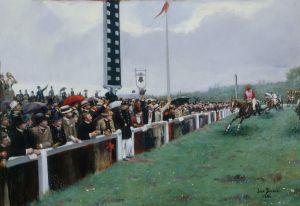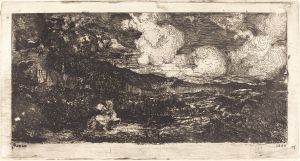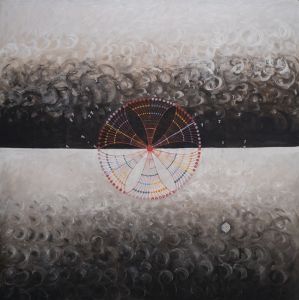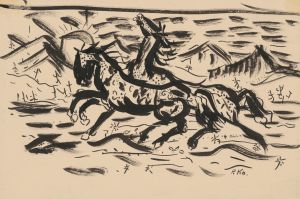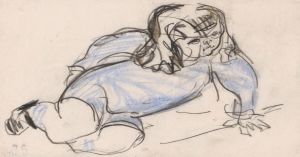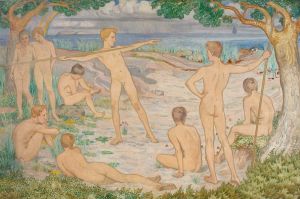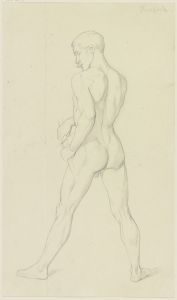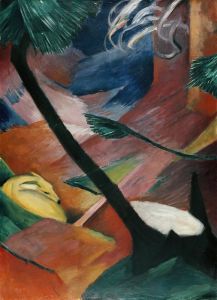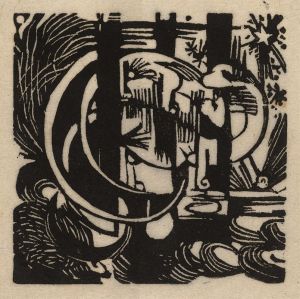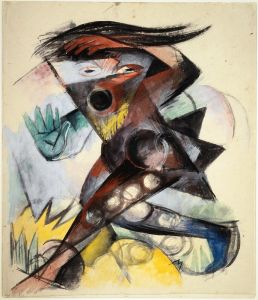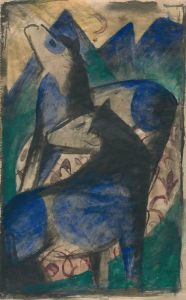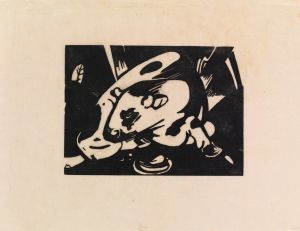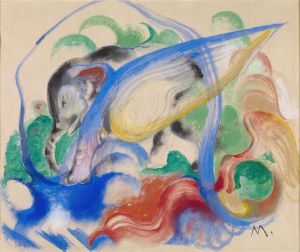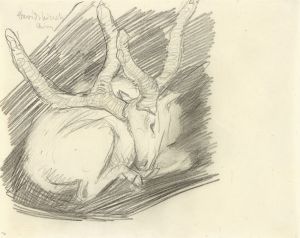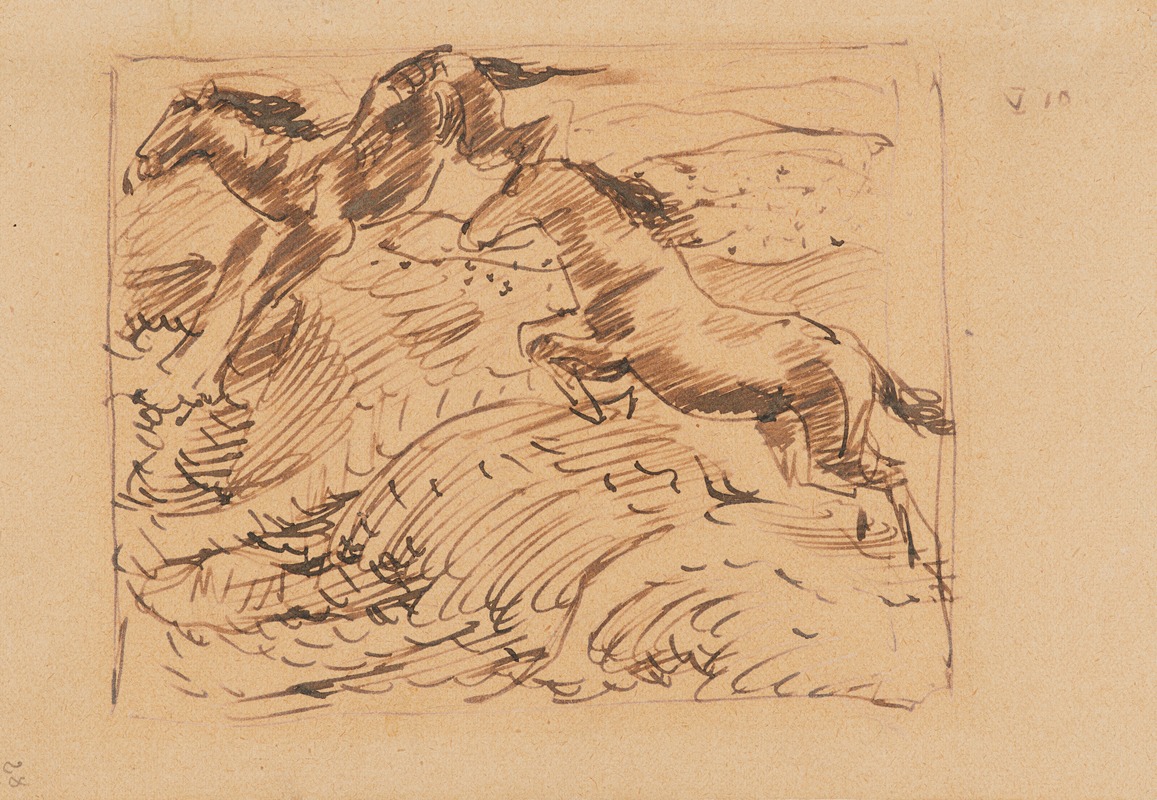
Springende Pferde, Kompositionsentwurf
A hand-painted replica of Franz Marc’s masterpiece Springende Pferde, Kompositionsentwurf, meticulously crafted by professional artists to capture the true essence of the original. Each piece is created with museum-quality canvas and rare mineral pigments, carefully painted by experienced artists with delicate brushstrokes and rich, layered colors to perfectly recreate the texture of the original artwork. Unlike machine-printed reproductions, this hand-painted version brings the painting to life, infused with the artist’s emotions and skill in every stroke. Whether for personal collection or home decoration, it instantly elevates the artistic atmosphere of any space.
Franz Marc, a prominent German painter and printmaker, is best known for his vivid depictions of animals and his role in the Expressionist movement. One of his notable works is "Springende Pferde, Kompositionsentwurf" (Jumping Horses, Composition Sketch), which showcases his distinctive style and thematic focus.
Franz Marc was born on February 8, 1880, in Munich, Germany. He initially studied theology but later shifted to art, enrolling at the Academy of Fine Arts in Munich in 1900. Marc's early works were influenced by naturalism, but his style evolved significantly after encountering the works of Vincent van Gogh and the Fauves. He became a co-founder of the Blue Rider (Der Blaue Reiter) group in 1911, alongside Wassily Kandinsky, which played a crucial role in the development of German Expressionism.
"Springende Pferde, Kompositionsentwurf" is a preparatory sketch that reflects Marc's fascination with animals, particularly horses. Marc believed that animals possessed a spiritual purity that humans had lost, and he often used them as symbols in his work. His depiction of animals was not merely representational but imbued with a deeper, almost mystical significance.
The sketch "Springende Pferde" features dynamic, fluid lines that capture the movement and energy of horses in mid-jump. Marc's use of bold, expressive lines and simplified forms is characteristic of his mature style. The composition emphasizes the grace and power of the horses, conveying a sense of freedom and vitality. This work, like many of Marc's pieces, demonstrates his interest in capturing the essence of his subjects rather than their literal appearance.
Marc's color palette, although not fully realized in this sketch, typically included bright, non-naturalistic colors. He believed that color had symbolic meaning and emotional impact. For instance, he often used blue to represent spirituality and masculinity, yellow for femininity and joy, and red for violence and conflict. While "Springende Pferde, Kompositionsentwurf" is a monochromatic sketch, it likely served as a preliminary study for a more colorful and detailed painting.
Franz Marc's career was tragically cut short by World War I. He was drafted into the German army in 1914 and continued to create art even while serving. Unfortunately, Marc was killed in action on March 4, 1916, at the age of 36. Despite his brief career, his work had a lasting impact on modern art, and he is remembered as one of the leading figures of German Expressionism.
"Springende Pferde, Kompositionsentwurf" remains an important piece within Marc's oeuvre, illustrating his innovative approach to form and composition. It provides insight into his creative process and his enduring fascination with the natural world. Marc's legacy continues to be celebrated in museums and collections worldwide, where his vibrant and emotive works inspire new generations of artists and art enthusiasts.





